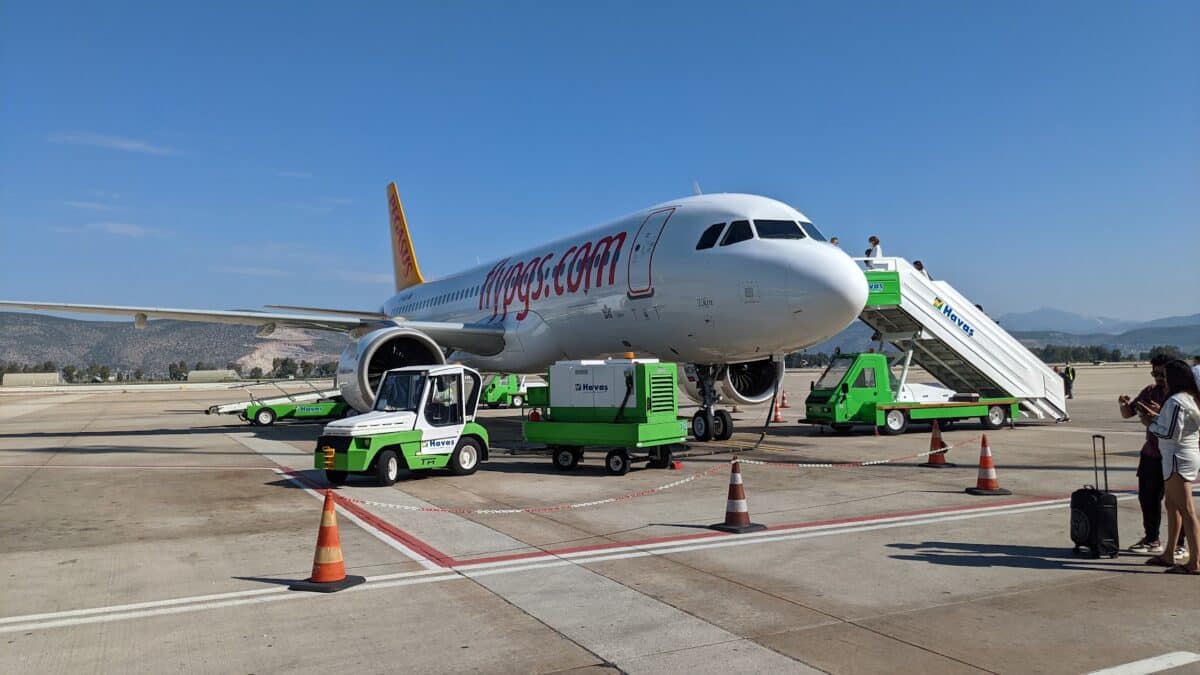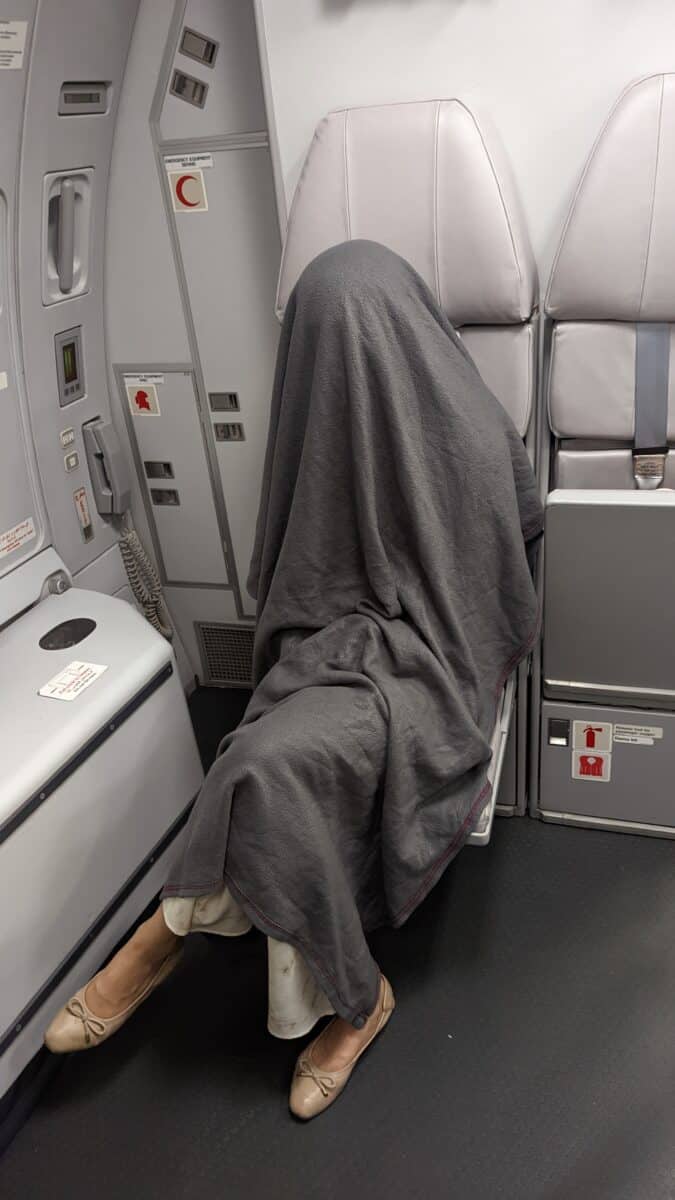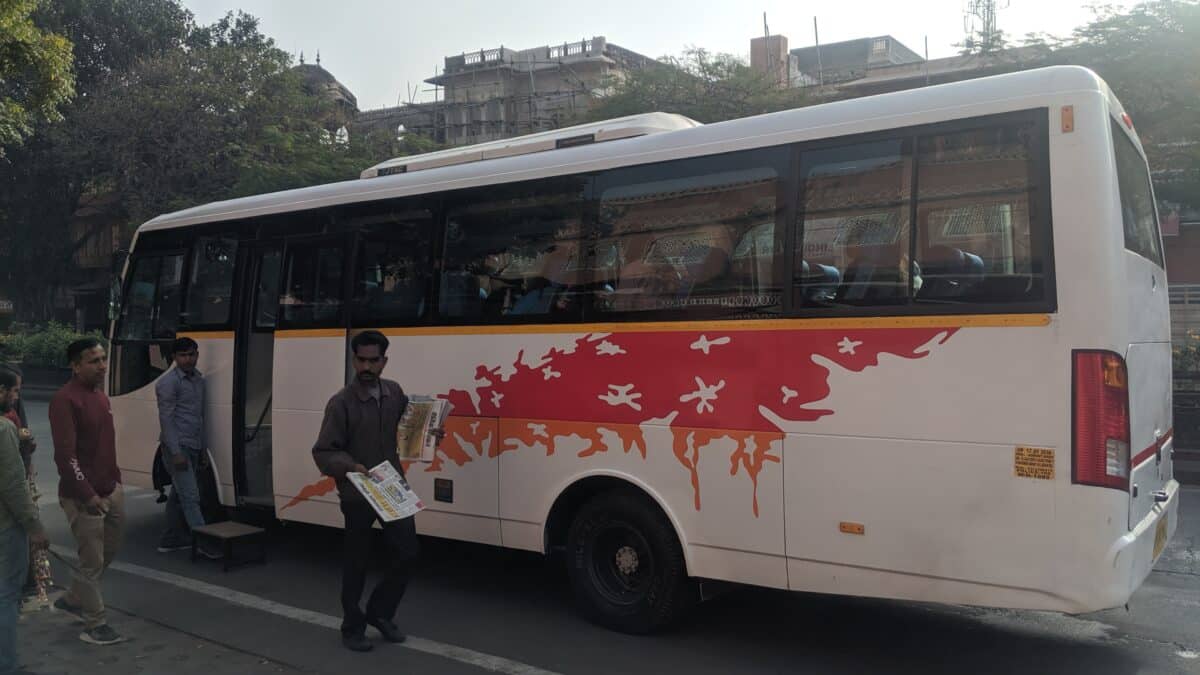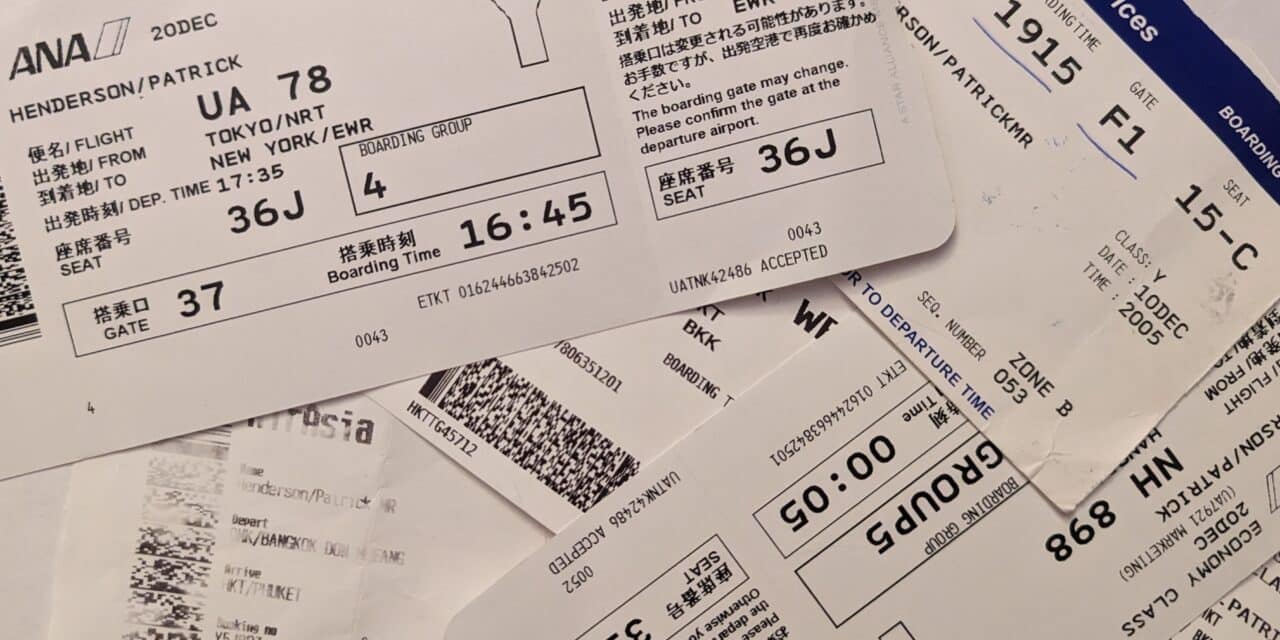Proof of onward travel? What the heck is that? Is that even a thing?
It is. In fact, this could even be a reason why you miss your flight if you have a one-way ticket!
“Before you board, I need to see your proof of onward travel.”
“What do you mean onward travel? It’s a one way ticket!”
Luckily, the first time I heard about proof of onward travel, I wasn’t on the receiving end. I can’t remember where I was, or where I was going, but I watched the confrontation intently.
A guy around my age was trying to board the flight a few spots ahead of me in line. They wanted to see his proof of onward travel, and he had no idea what they were talking about.
I eventually passed him in line and boarded the plane. They never let him on.
But why could I board and not him? Well, I had a round-trip ticket, and my return flight was my proof of onward travel. He on the other hand only had a one-way ticket.
Table of Contents
Why is proof of onward travel a thing?
Picture this. Someone gets a travel Visa, flies to a new country, and decides to stay a little longer than they’re permitted, or never leave.
Big deal? So what if you do?
Well, you might be knocking on the door of what is called Illegal Immigration. I know the Southern border is a hot-button topic in the United States right now, but did you know that Visa overstays have outnumbered people who entered the country illegally at the Southern border every year since 2007? Don’t believe me? Check the stats here: Center for Migration Studies.
While very far from perfect, proof of onward travel seeks to stop this from happening. Think the statistics on that site are bad? Well, they’d be even worse without it.

What is proof of onward travel?
Proof of onward travel is exactly what it sounds like. Proof that you have a plan in place for leaving the country at some point before your Visa expires.
All countries really care about is that you intend to leave when your trip is over and that you can prove you have enough money to do so.
This proof can take many forms, but the most common by far is a round-trip plane ticket. That return flight shows that you’re so determined to return home, that you went and purchased a flight to do just that.
Depending on where you’re going, it’s not always as straightforward as a flight.
For example, when I rode the Trans-Siberian Railway, I started in Beijing. While at the Chinese embassy in NYC to apply for my Chinese Visa, I was questioned about onward travel because I had a one-way flight to China.
I was getting my Visa early so I was still in the process of searching for my return flight, but they needed to see it regardless. Well, I ended up buying a return flight from Moscow on my cell phone while standing in line.
That wasn’t good enough for her because it only showed my leaving Russia and didn’t prove that I intended to leave China. You can’t argue with this mind-blowing logic.
As you can see, certain countries are more strict with this than others.
It also can depend on who you are talking to.
I explained what my plan was to the woman at the counter, but she wanted to see a flight leaving China.
What she really needed to see was the train ticket that would be carrying me from China to Mongolia. She just didn’t know it.
Fast forward through my explaining riding the Trans-Siberian Railway to her and she finally took a copy of my train ticket, but she was very adamant that they probably wouldn’t accept it as proof.
Guess what? It was approved immediately. Depending on where you are, a train or bus ticket can sometimes be enough.

I don’t think she was trying to hide, but without proof of onward travel, you won’t be hiding, and you definetly won’t be getting on the flight!
You’ll need to prove these things before you are allowed to fly.
China is a special case, of sorts, as they are extremely strict on people coming and going. This should be illustrated by the fact that I had to show my proof of onward travel, in person, to the Chinese Embassy in New York City as part of my Visa application.
Most countries indirectly delegate this responsibility to the airlines themselves. They do this because if an airline doesn’t verify your proof of onward travel before you board the plane, and then immigration flags you upon arrival, the airline is going to be on the hook for sending you back. Not to mention a possible fine that they may be facing.
What can you do?
Well, the most obvious solution would be to just book a round-trip ticket right from the start. Or at least one that shows you leaving the country. It doesn’t matter where you’re going so a multi-city ticket works just fine. All they want, is you, gone. Rude, right?
Is booking a flight a little too set in stone for you? Don’t worry, you have options.
1. Rent a Ticket Confirmation
As ridiculous as this sounds, yes, you can literally rent an airline ticket just to use as proof and nothing more than that.
There are a few websites that will allow you to do it such as Onward Ticket.
At only $12 per rental, this is one of the easiest methods to use. You simply go to their website and enter the required information to generate the ticket.
You don’t get an actual e-ticket, but your confirmation will include a PNR (Passenger Name Record) Code which is verifiable on major airlines’ websites. This allows them to check and see if your reservation is legit.
I’m listing this one first because it’s the most viable and economical of the choices, in my opinion.
Oh, and I should hope that this goes without saying, but don’t tell them it’s a rental.
2. Book a flight that offers free 24-hour cancelation
Many airlines and websites will afford you the opportunity to cancel for free within the first 24 hours.
This is more for the person who accidentally bought the wrong ticket, or has some last-minute change come up, but it works here too.
Simply buy a ticket, fly to your destination, and cancel your separate return flight after you land. I’d wait until you’re out of the airport, just in case.
3. Buy a Refundable ticket
If you have a ton of patience, this could be your path. But bear in mind, when I say patience, I mean PATIENCE. I’m still waiting on a refund from over a year ago. (Don’t book anything through Kiwi.com)
4. Hold a Flight Ticket for 24 Hours
If you’re from the USA, all airlines, as well as some online travel agencies are required to offer a 24-hour hold period for your ticket. (This is where you get the notice *we will hold this price for 24 hours* notice.
This way, you can reserve and lock in your ticket for 24 hours. You’ll then be sent a confirmation email, which you can show to the airport staff if asked.
I haven’t tried this way myself, so while it should work, I prefer the more tried and true methods.
5. Buy a Cheap Ticket and Toss it
This one is hit or miss. Depending on where you are, sometimes you can search a site like Skyscanner (my personal choice for finding flights) and find a ticket to a neighboring country for as little as $10. Yes, my fellow Americans… you read that right. $10. Welcome to Europe. Meanwhile, if we want to fly to a city three hours away, we get hit for as much as $150. We’re being scammed over here. Shenanigans!
Other times, there might be nothing for under $50. It mostly comes down to what you’re willing to let go, but if it’s more than $12, you’re probably better off renting a ticket confirmation.
6. Buy a Flexible Date Ticket
It’s not quite the same as booking a one-way ticket, but a flexible date ticket allows you to have a little more control over your departure.
The downside with this option is that flexible date tickets usually cost more.
7: Book With Your Airline Miles
Do you fly a lot? Or maybe you have a credit card that gives points. Book a one-way ticket with your points. It’s nothing out of pocket to you.
Then, once you’re there, cancel your flight and your points get refunded. Just like that.
This isn’t a method that I’d ever use because I go through my points as soon as I have enough for a good flight. Because of this, my balance is typically too low.
Plus, you always run the risk of your credit card company dropping some new fine print on you.
8. Purchase a train or bus ticket out of the country
While a plane ticket is still your best bet, a train or bus ticket out of the country will usually work as well.
This is the way I was able to show proof of onward travel when I went to China, but as I said above, sometimes you might get the wrong person who doesn’t know any better.
Yes, the woman who argued with me at the Chinese embassy was wrong, but she didn’t know the rules.
Had she been standing at the desk in the airport, who knows, maybe she wouldn’t have let me on.
I’d like to think that anyone working in an airport would have a better grasp of what is or isn’t valid, but you can never be sure of what someone does or doesn’t know. I did, after all, recently encounter airport staff in Thailand who didn’t know what terminal we were in. Derp.
Should you try this method and it doesn’t work, ask to speak to a supervisor and explain the details of your trip.
Still no go? Rent a ticket real fast and tell them you just purchased a flight.

While a plane ticket is still your best bet, a train or bus ticket out of the country will work as well.
9. Create a Fake Ticket Confirmation
I’ve seen this suggested quite a bit. I wouldn’t do it. If you get caught, depending on the country you’re in, you could be looking at a steep penalty. I’m not going to speculate as to what it might be, but probably not anything good.
I know everyone likes to think that they’re good at photoshop, but you might not be as great as you think. I once had someone show me a fake COVID test they wanted to use at the start of the pandemic when testing was still slow.
They were convinced that it was a perfect forgery. Let me tell you, Mr. Magoo could have spotted that it was a fake.
*For the record, I’ve never faked a test.*
Which countries require proof of onward travel?
Quite a few, actually. The website Onward.flights lists a total of forty-six countries that require proof of onward travel! That’s a little less than a quarter of all countries in the world.
If you travel a lot, I’d advise taking a look. Some of the countries on it might surprise you. This is one of those situations where the more you know, the better. This way you won’t be stuck and denied entry to your flight like that guy I saw who had no idea what onward travel was.
There’s no worse way to end a trip than with an abrupt end that could have easily been avoided.






